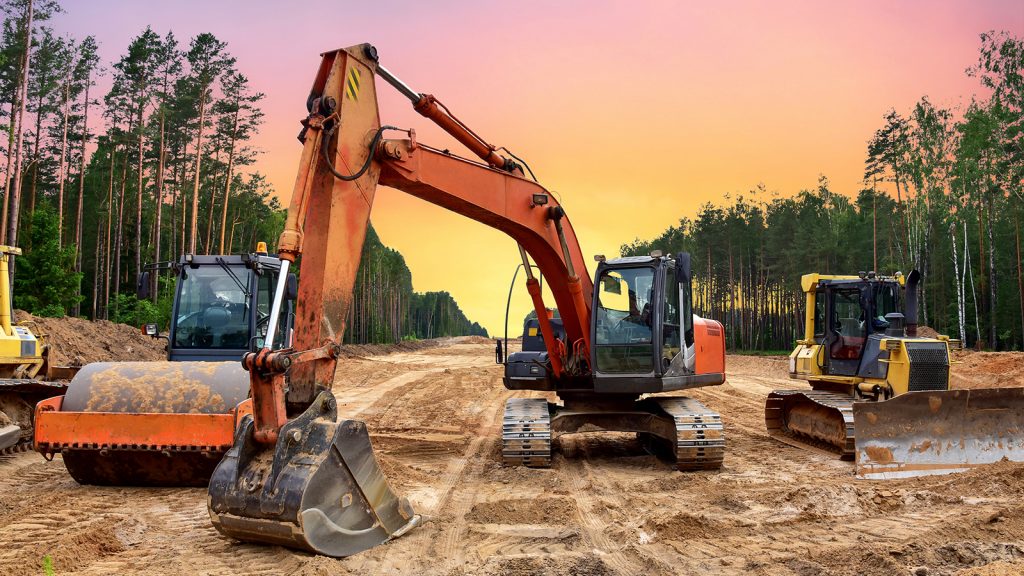
“You can’t build a great building on a weak foundation” – old quotes have a point!
We all know that the journey of every building starts with its foundation. When the talk turns to foundations, then the significance of construction site grading automatically shines through.
What is Construction Grading?
Grading is the process of preparing the land surface before construction. Grade is the slope of the land, and the first step of any construction process is to make the slope of the ground conducive to the building requirements.
While doing Earthwork Services like grading or adjusting the slope/level of the ground, professionals must carefully consider several factors, such as soil composition, water retention, and density.
What Does a Grading Project Entail?
A site grading plan involves shaping and leveling the ground to achieve the desired elevation and contours necessary for the construction of a building. This can be achieved by excavation, earthmoving, and compaction.
It also involves soil analysis and testing to discover its density and other properties that could impact the construction process or the final building. The site stabilization and construction grading process is an indispensable part of every building project, as a stable platform is crucial to support the weight of the structure and withstand environmental pressures.
Why is Grading Key To the Building Process?
Aesthetic Enhancement
Sculpting the landscape is a vital part of creating an overall look and feel for the office building and its surroundings. Through strategic landscape grading, construction professionals and civil engineers can create graceful slopes, gentle inclines, and harmonious transitions between different elevations. This adds dimension and character to the building site and gives the people working in it pleasing outdoor spaces to unwind in.
Getting Drainage Right
Grading is important for the natural water management of your building site. By creating strategic slopes during the commercial construction project, you can ensure that rainwater and snow melt don’t pool in any one area and are gently led in the right direction.
Standing water not only encourages pest infestation and mold but can also lead to structural damage in the long run. These are just some of the consequences of improper grading.
Long Lasting Stability
Buildings are heavy, and you certainly don’t want to see a leaning-tower-of-Pisa-style tilt or sink with your office complex. A well-executed and detailed grading plan provides a stable foundation upon which the office building can rest confidently.
During the grading process, construction teams can address potential soil instability issues, such as settling, shifting, or subsidence, and treat these problems before the construction starts.
Ultimately, precise grading ensures that the risk of structural failure is minimal and reinforces the building’s resilience against natural forces.
Regulatory Compliance
Environmental concerns and public safety have been safeguarded by the regulatory landscape at the local, state, and federal levels. From zoning ordinances to stormwater management requirements, every office building has to comply with regulatory standards. Grading is essential to help builders align with applicable regulations and permits.
Cost-Effective in the Long run
Grading is an unskippable part of constructing any building! It might be expensive, but its long-term benefits far outweigh the costs. Think of it as investing in your future or as insurance. By ensuring your foundation is correctly laid and leveled, you can avoid and address site challenges proactively.
Types of Grading
Every time you see a perfectly landscaped exterior, try to imagine how it was created. There are several types of grading that are used to tackle and achieve different goals.
Landscape Grading
Site grading in landscape projects comprises changing the shape and slopes of land by removing topsoil, installing drainage systems, and more. The process is defined by the design and vision of the landscape artist.
Regrading
Specifically used for small adjustments and specific areas, Regrading raises or lowers sections of the land and is used mostly to improve drainage or create specific aesthetic features.
Architectural Grading
If regrading is small and contained, then architectural grading is the very opposite. It involves completely reshaping the land to fit the planned structure design like for building pads. This 360 grading has all the main features of grading – proper drainage, leveling, and more.
Rough Grading
Think of rough grading as the first draft of your final landscaping. Rough grading is only focused on achieving the correct slope and shape for the project. It also involves getting any land-moving work needed to achieve the correct drainage before construction can begin.
Utility and Drainage Grading
Utilities are core needs of every building, and specific grading is aimed at making sure they have a smooth path. This involves creating trenches for pipes, cables, and drainage systems while ensuring proper slopes and elevations for efficient water flow and avoiding future problems.
Finish Grading & Final Grade
Finish grading adds the final details to your landscape and focuses on perfecting the shape of the land specifically for planting, seeding, or laying sod. After finish grading comes final grading; final grading is the last step and involves applying a top layer of topsoil, creating the perfect environment for healthy plant growth.
Conclusion: Start Strong to Stay Strong
Grading is the unmissable first step that sets the stage for architectural excellence to unfold. While many think of land grading as a visual value add for the office building, it is critical for structural integrity in any project in the construction industry.
Every professional construction project must start embracing the principles of grading and harnessing its transformative power to build resilient, long-lasting, and beautiful office complexes.
Have we convinced you to invest in top-quality land grading? Yes? Then what are you waiting for? Get in touch and get started.




